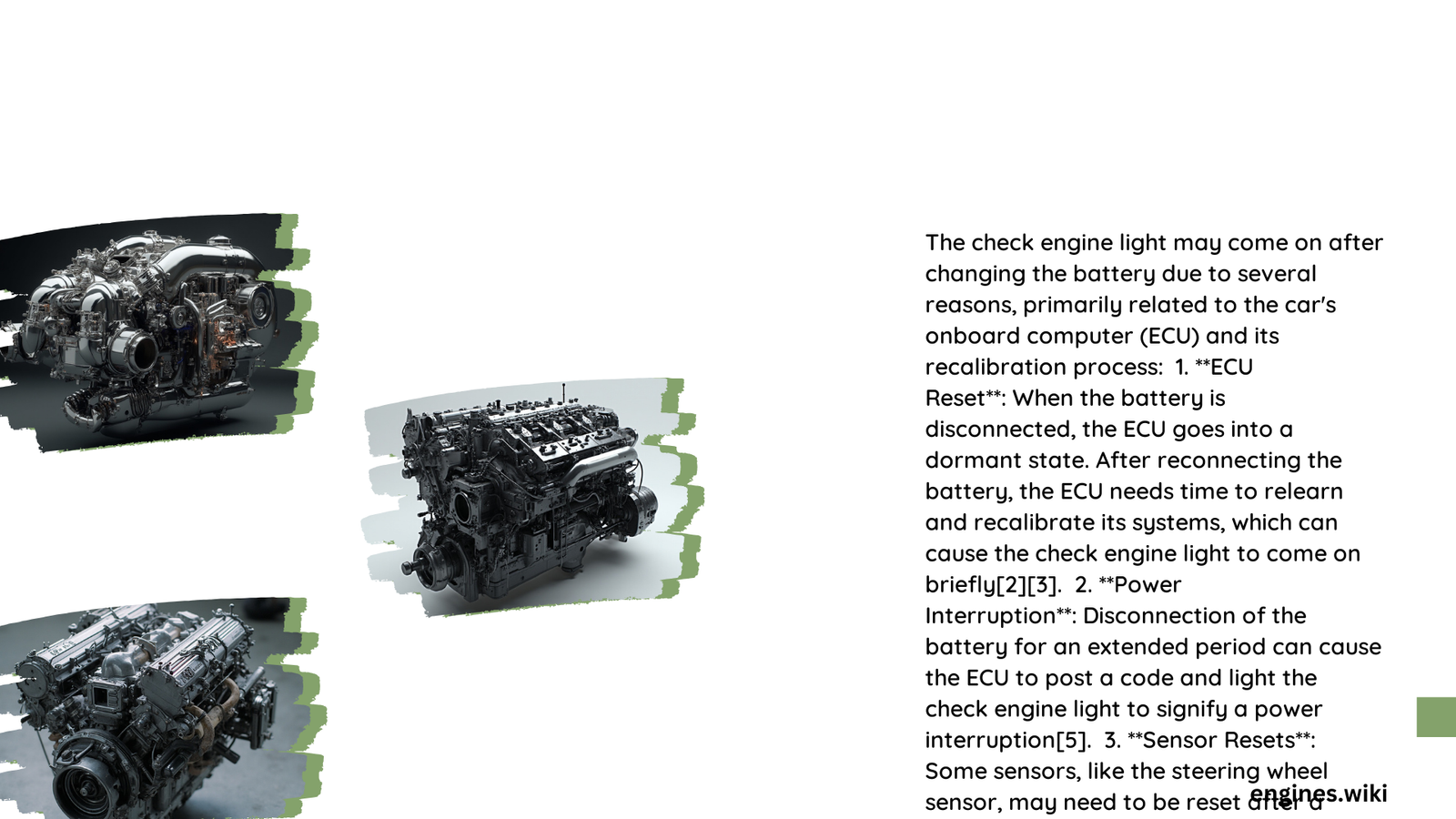The check engine light coming on after changing a car battery is a common issue that can perplex many vehicle owners. This phenomenon occurs due to various factors related to the vehicle’s electrical system and onboard computer. The main reasons include loss of adaptive data, system resets, and voltage fluctuations. Understanding these causes can help diagnose and resolve the issue quickly, ensuring your vehicle runs smoothly after a battery replacement.
Why Does the Check Engine Light Activate After Battery Replacement?
The activation of the check engine light after a battery change can be attributed to several factors:
-
Loss of Adaptive Data: Modern vehicles rely on adaptive systems that learn and adjust to driving patterns and conditions. When the battery is disconnected, this data is lost, causing the system to relearn and potentially triggering the check engine light.
-
System Reset: Disconnecting the battery resets the vehicle’s onboard computer and diagnostic systems. This reset can cause temporary disruptions that may activate the check engine light.
-
Voltage Fluctuations: If the new battery doesn’t provide stable voltage, it can affect the engine’s electronic control unit (ECU), leading to fault codes and check engine light activation.
What Are Common Fault Codes Triggered After a Battery Change?

After replacing a battery, several fault codes may appear:
-
P0420 – Catalyst System Efficiency Below Threshold: This code often appears due to the ECU’s recalibration process after a battery change.
-
P0300 – Random/Multiple Cylinder Misfire Detected: The ECU may trigger this code while adapting to the new battery and relearning engine performance parameters.
-
P0171 – System Too Lean (Bank 1): This code can appear if the fuel trim settings are reset and need time to readjust.
How Can You Reset the Electrical System After Battery Replacement?
Resetting the electrical system is often necessary to clear temporary issues:
-
Wait Period: Disconnect the battery and wait for 15-30 minutes to allow residual power to dissipate.
-
OBD-II Scanner: Use a scanner to read and clear trouble codes.
-
Drive Cycle: Drive the vehicle for 10-15 miles to help the ECU adapt and potentially clear the check engine light.
What Are the Consequences of Improper Battery Installation?
Improper battery installation can lead to various issues:
- Voltage instability affecting ECU function
- Potential damage to electrical components
- Persistent check engine light and fault codes
| Consequence | Potential Impact |
|---|---|
| Voltage Instability | ECU malfunction, system errors |
| Component Damage | Costly repairs, electrical failures |
| Persistent Codes | Failed emissions tests, reduced performance |
How Does Battery Type Affect System Performance?
Different battery types can impact system performance:
- AGM Batteries: More resistant to temperature fluctuations, better for modern vehicles with high electrical demands.
- Lead-Acid Batteries: Traditional type, more sensitive to extreme temperatures.
- Lithium-Ion Batteries: Lightweight, high-performance option, but requires specific charging systems.
What Steps Should You Take If the Check Engine Light Persists?
If the check engine light remains on after attempting a reset:
- Use an OBD-II scanner to read specific fault codes.
- Check battery connections and voltage output.
- Inspect the alternator for proper charging.
- Consider professional diagnostics if issues persist.
Can Software Updates Resolve Check Engine Light Issues?
In some cases, software updates can resolve persistent check engine light problems:
- ECU firmware updates may address known issues.
- Dealership or specialized shops can perform these updates.
- Some modern vehicles allow over-the-air updates for certain systems.
How Do Environmental Factors Influence Battery-Related Check Engine Light Issues?
Environmental factors can play a role in battery performance and related check engine light issues:
- Extreme cold can reduce battery capacity and trigger voltage-related codes.
- High heat can accelerate battery degradation and cause system instabilities.
- Humidity can affect electrical connections and sensor readings.
By understanding these factors and following proper procedures during and after battery replacement, you can minimize the chances of encountering check engine light issues and ensure your vehicle’s systems function correctly.
References:
1. RepairPal – Why did my engine light come on after replacing battery?
2. HTSaves – Do I Need to Reprogram My Car After a Battery Replacement?
3. YouTube – Auto Repair Guys: ENGINE LIGHT ON AFTER BATTERY REPLACEMENT
